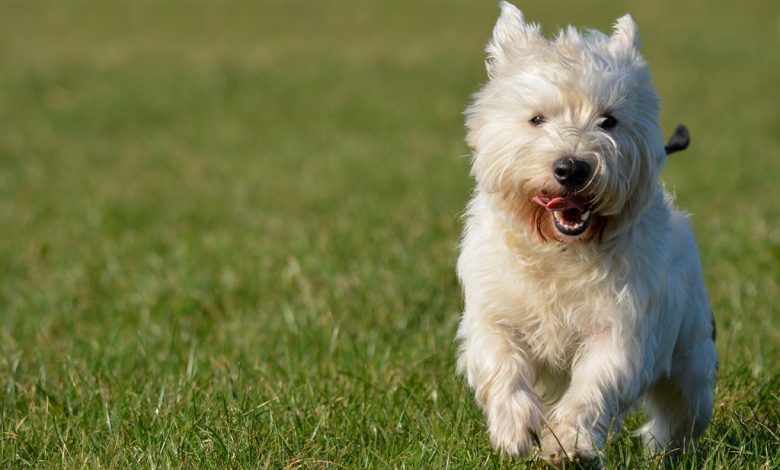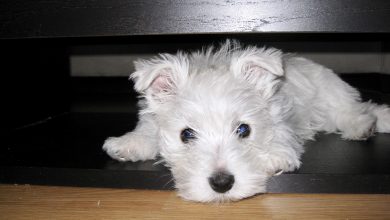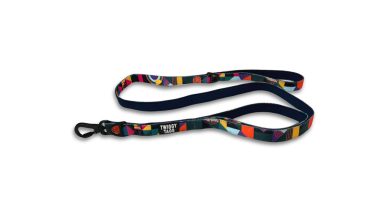Hind limb strength is essential
It is vital to protect a Westie’s joints and hind limb strength while they are still young and active.
It is of extreme importance to try and keep furry friends as balanced as possible for as long as possible to avoid overstrain and overload injuries. Dogs in general put around 60% of their weight through their front limbs (30% + 30%) and 40% through their hind limbs (20% + 20%) any weakness in the hind limbs will mean an increase in weight going through their front limbs.
It is important to understand why your four-legged friend has lost hind limb strength. This could be age related causing osteoarthritis and muscle weakness, hip dysplasia, or an underlying health issue such as kidney disease. Therefore, before you follow any of the exercises below, please see your primary care vet for advice. That being said if your dog is healthy, the following will help maintain muscular health.
Firstly, if you do have a dog with hip dysplasia or osteoarthritis (arthritis, wear, and tear etc) then the key point is to keep exercises to low impact/high resistance. Things like short but frequent walks are beneficial and be sure to avoid jumping or running long distances.
The walks can incorporate walking UP hill so that the hind limbs are pushing the dog up the hill and increasing gluteal (buttock muscles) and hamstring (back of the leg) strength, also walking perpendicular across the hill each way will help strengthen those hind limb muscles and the dogs core stability.
Tripods will help load the hind limbs (these will be explained below) and swimming will have a good all-round effect on the dog as it is low impact. Swimming will help reduce pain and inflammation, as the joint is being used and put through its motions to help improve the fluid in the joint, whilst the dog is being supported by the water. Swimming will help to increase gluteal strength and core stability as well as being a good cardiovascular exercise. It is said that a one-minute swim is the equivalent of a 1 mile walk for our dogs, so an all-round win.
Please keep in mind where you let your dog swim – make sure it is safe and clean. If you allow your dog to swim in rivers etc make sure you can see the bottom as you never know what they might catch themselves on, also keep in mind any current flow. If swimming on the beach, make sure they don’t swim out too far that they can’t get back, watch out for currents and just as importantly try to avoid throwing a ball in for them. As the dog picks up the ball it takes in seawater, with the high concentrate of sea salt this can lead to sickness and kidney disease, so limit the ball throwing and the amount of time they swim in the sea for. Personally, I take mine to a hydrotherapy centre for a fun/maintenance swim as I know it is safe and there will be someone trained in hydrotherapy there in the water with them.
If you have a happy and healthy dog then whilst doing the above aforementioned exercises whilst out on a walk you could also incorporate agility training or Hoopers (Hoopers is the same as agility, older dogs may prefer it as they don’t have to do the jumping of the hurdles) always use a qualified instructor as they have an understanding of how the dog should move and not over work the dog to the point of breakdown. Also Sit to Stand exercises will also help to strengthen those hind limb muscles.
TRIPODS:
- With your dog standing square on all four paws (front paws in line with each other and the same for the hind paws)
- Gently lift a front paw off the floor by 2 inches, this will alter your dogs weight/balance and place more into the diagonally opposite hind limb
- Hold for 5 seconds and place down on the floor
- Do the same for the other front limb.
- Repeat 5 times
- Over time build up the seconds to 10, 15,20,25 and 30
For good measure you can also do tripods with the hind limbs (picking up the hind limb paw)
SIT TO STAND:
- Have your dog stand in front of you and ask them to sit
- They should sit evenly on both hind limbs if there is no underlying issue
- Ask them to stand by luring them towards you with a treat. Try to get them to stand up in the same spot, without them taking a step forwards
- Ask the dog to sit again and repeat for 3 sets of 5 repetitions
- Build this up to 5 sets of 10 repetitions
Remember you do NOT have to give the dog the treat on each repetition.
Any treats used for exercises should be taken out of their daily meal allowance to prevent weight gain.






